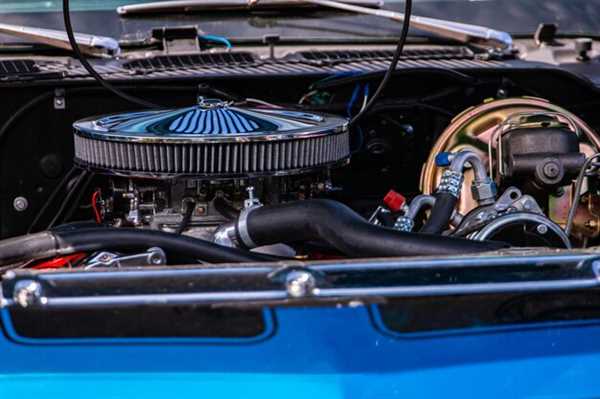
Investing in high-quality tire changers can dramatically reduce the time spent in the pits, allowing your crew to maintain the momentum needed to stay competitive. Precision-engineered tools, paired with proper training, make all the difference in race performance.
Another cornerstone of success is the use of reliable telemetry systems. These devices provide real-time data about vehicle performance, helping the crew make timely adjustments based on track conditions and driver feedback. Implementing robust data analysis tools further enhances decision-making during races.
Don’t overlook the importance of communication devices. Advanced headsets or radios enable seamless coordination among team members. Clear communication is essential for speed and efficiency, ensuring that swift strategies are executed flawlessly under pressure.
Hydraulic jacks are also paramount; they significantly speed up the process of lifting vehicles for servicing. Choosing jacks with durable construction ensures reliability during high-stakes situations.
Lastly, investing in a well-organized pit toolbox can enhance workflow efficiency. Keeping tools easily accessible and properly labeled saves precious seconds in critical moments, contributing to a team’s overall performance on the track.
Critical Tools for Rapid Tire Changes in the Pit

Pneumatic impact wrenches are indispensable for swift tire swaps. These devices enable quick loosening and tightening of wheel nuts, reducing downtime significantly. Select models that offer adjustable torque settings to accommodate various wheel types.
Quick-release wheel pins enhance efficiency during transitions. They allow tires to be mounted and dismounted without fumbling, ensuring that crew members can work seamlessly in high-pressure situations.
Tire dollies streamline the process of moving tires in the pit. They should be lightweight yet durable, enabling crew members to transport tires effortlessly between the storage area and the car.
High-quality ratchet straps prevent tire movement during transport and storage. Choose straps with a high weight rating to ensure safety and reliability, minimizing the risk of injury or damage in the pit area.
A tire pressure monitoring system (TPMS) lets teams assess tire conditions in real-time, ensuring optimal performance. This technology can flag issues immediately, allowing for rapid response and adjustments before they impact the race.
Training crew members in the use of specialized equipment is just as crucial as the tools themselves. Drills and practice sessions will amplify speed and coordination, further enhancing the pit stop process.
High-Precision Equipment for Engine Adjustments

Invest in a digital torque wrench, providing accuracy down to 0.1 Nm. This device is crucial for achieving the precise torque specifications required during adjustments, ensuring engine components secure properly without damage.
Utilize a bore gauge for measuring cylinder diameters. This instrument is paramount when determining wear and alignment. It allows the crew to maintain optimal engine performance.
Implement a quality exhaust gas analyzer. This equipment evaluates emissions and combustion efficiency, assisting the crew in fine-tuning air-fuel ratios for peak performance and compliance with regulations.
Incorporate an engine data acquisition system. This system captures real-time performance metrics, enabling immediate adjustments in the pit. It provides insight into engine behavior under racing conditions, enhancing decision-making during strategy calls.
Adopt a crankshaft harmonic balancer. Ensuring engine balance and minimizing vibrations, this tool significantly impacts longevity and performance, aligning with the crew’s goals during intense races.
Safety Gear and Protocols for Pit Crew Operations
Fire-resistant suits are mandatory for all crew members to protect against flames and heat. These suits should be tailored to fit properly and include features such as reinforced stitching and nomex material.
Helmets with full-face protection are critical; they must adhere to the latest safety standards and include a shield to protect against flying debris. A well-fitted helmet can reduce the risk of injury significantly during pit lane activities.
Fire extinguishers should be strategically placed in the pit area, easily accessible within moments. Each crew member must receive training on the proper use of these extinguishers, ensuring a swift response in emergencies.
Gloves made from heat-resistant materials are necessary for handling hot components. These gloves must provide a good grip while allowing flexibility to perform tasks efficiently.
Signage indicating emergency exits and procedures is crucial. Position clear markers around the pit area to guide crew members in unforeseen situations.
Regular safety drills are advisable to ensure all crew members understand their roles in emergencies. These simulations help build confidence and prompt action during real incidents.
A buddy system can enhance safety; assigning partners during pit operations ensures that crew members can monitor each other, especially in high-stakes situations.
Communication systems should be robust, allowing for instant alerts regarding potential hazards. Earmuffs or headsets can enhance communication amidst the noise of the racing environment.
Lastly, routine inspections of all safety equipment is necessary. Any worn or damaged gear must be replaced immediately to uphold safety standards within the pit operations.

